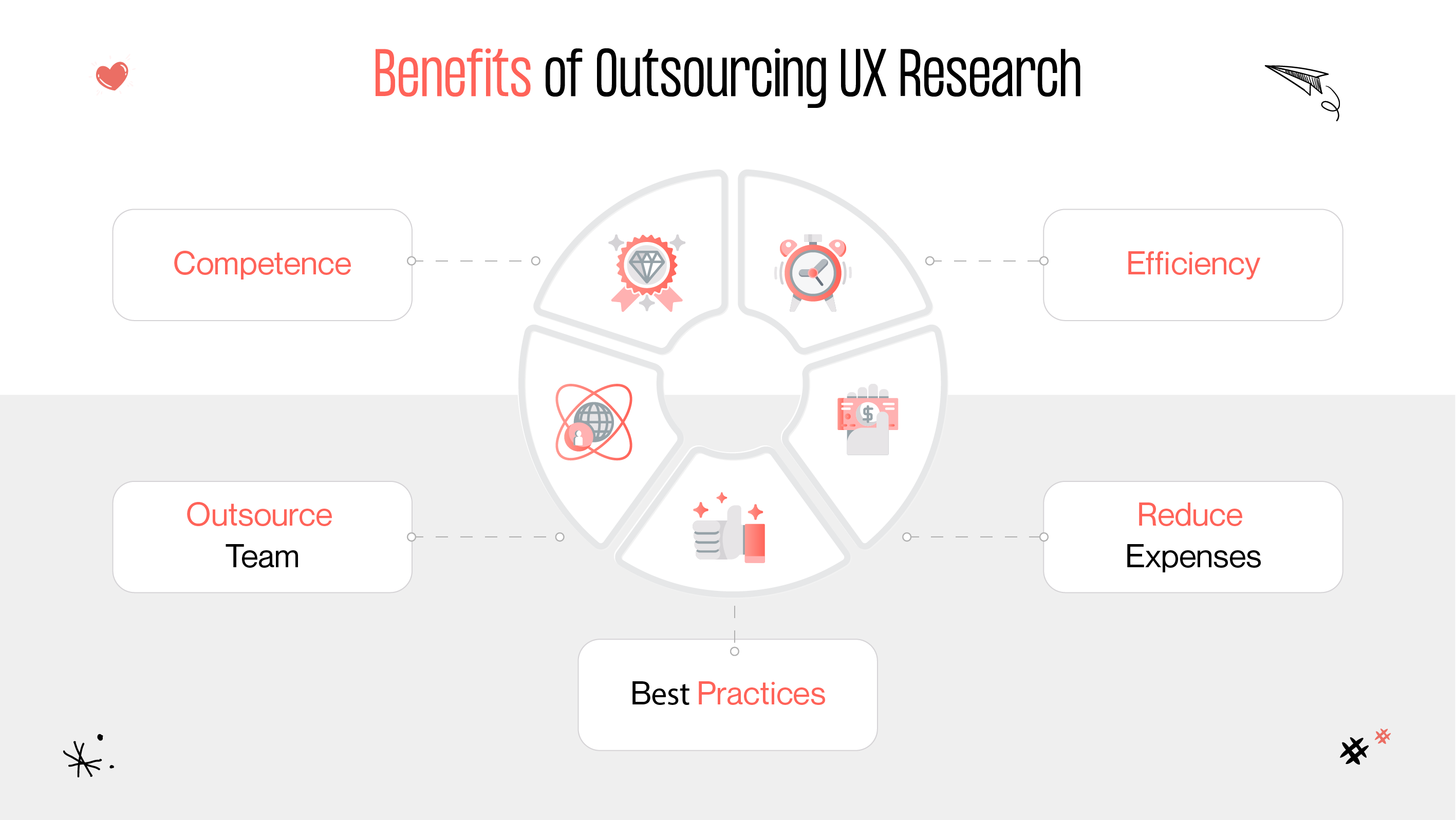User experience reigns supreme, dictating the success or failure of products and services across industries. At the heart of this success lies UX research, a dynamic process that delves deep into users’ minds and behaviors to uncover invaluable insights. How to do it effectively? The answer is to outsource UX research. It’s a strategic solution that offers companies access to specialized knowledge, streamlined processes, and accelerated results. In fact, IT services make up around three-quarters of all global outsourcing contract values.
Here, we'll explore the benefits, challenges, and best practices associated with outsourcing UX research, empowering businesses to make informed decisions and unlock the full potential of their digital offerings.













